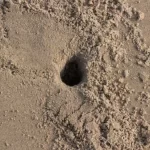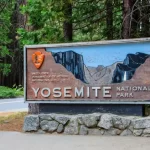A Sinkhole Swallowed A Man’s Bedroom In 2013. No Trace Of Him Has Been Found
The post A Sinkhole Swallowed A Man’s Bedroom In 2013. No Trace Of Him Has Been Found appeared first on Healthy Holistic Living.
In the quiet of the night, a Florida man’s world was literally swallowed up, leaving behind a pretty scary story. On a seemingly ordinary night in 2013, Jeff Bush was thrust into the abyss as a sinkhole opened up beneath his Seffner home. The Seffner sinkhole took him, his bedroom, and everything in it into the earth’s secretive embrace.
This tale, resurfacing from the depths of internet discussions, captivates our imagination and reminds us of nature’s unpredictable power. As we delve into this story, we uncover the fragility of our existence against the forces of nature. We also explore poignant lessons on preparedness, awareness, and the value of every moment.
The Night That Changed Everything
In the heart of Seffner, Florida, a family’s life was forever altered in the early hours of March 1, 2013. Jeff Bush, a 37-year-old man, was in the realm of dreams when the ground beneath his home betrayed him. Without warning, a sinkhole—a gaping void 20 feet across and just as deep—opened up directly under his bedroom. The quiet of the night was shattered by a loud crash and Jeff’s desperate screams. That was the last his family heard of him.
Eyewitness Accounts: A Brother’s Valor
Jeremy Bush, Jeff’s brother, alongside Jeremy’s partner Rachel, were jolted awake by the commotion. Racing towards the source of the disturbance, they were met with a scene that seemed pulled from a nightmare. “We heard Jeff scream,” Rachel recounted to ABC Action News. “We ran down the hallway, flicked the light on, and were greeted by a massive hole where Jeff’s room once was. He was gone.”
In a frantic attempt to save his brother, Jeremy plunged into the Seffner sinkhole. He risked his own life to save his brother as the earth continued to swallow everything in its vicinity. Despite his valiant efforts, Jeremy had to be rescued by a deputy sheriff as the ground threatened to consume him too. “The floor was still giving in, and the dirt was still going down, but I didn’t care. I wanted to save my brother,” Jeremy told The Guardian. His heroism was palpable, yet the Seffner sinkhole left no opportunity for a rescue.
The Aftermath
The following day brought a grim acceptance; the house, deemed too dangerous, was demolished. The sinkhole, now filled with gravel, remains a stark reminder of that tragic night cordoned off from the public eye. The Seffner sinkhole event underscores the unpredictable nature of sinkholes. This is particularly true in areas like Florida, where the geological conditions create a perfect storm for such disasters.
Unveiling the Mystery: The Science of Sinkholes
Sinkholes are often shrouded in a veil of mystery and sudden devastation. However, they are a natural phenomenon with a well-understood scientific basis. Florida’s susceptibility to these events isn’t a quirk of fate but a consequence of its geological makeup. The state sits atop vast beds of limestone, a type of carbonate rock that plays a pivotal role in forming sinkholes.
How Sinkholes Form
Sinkholes occur when the ground below can no longer support the surface above. This process begins far beneath the earth, in the realm of groundwater circulating through soluble rocks like limestone. Over time, this water erodes the rock, creating underground caverns. When these caverns grow too large to support the weight of the earth above, the ground collapses, creating a sinkhole.
Florida’s Geological Vulnerability
Florida’s landscape is a textbook example of “karst terrain,” characterized by its soluble rock foundation. The US Geological Survey highlights this terrain as prime real estate for sinkhole formation. This geological vulnerability, combined with human activities such as water extraction and construction, increases the risk and frequency of sinkholes.
The Spectrum of Sinkholes
Sinkholes are not one-size-fits-all; they vary significantly in size and impact. From small depressions barely noticeable to vast chasms that can swallow entire buildings, the range is vast. The Xiaozhai Tiankeng in China, for instance, stands as the most enormous reported sinkhole, showcasing the extreme potential of what these natural phenomena can become.
Living with the Unpredictable: Navigating Sinkhole Risks
In areas prone to sinkholes, like Florida, understanding and preparing for these geological phenomena is crucial for community safety. Note that it’s impossible to predict precisely when and where a sinkhole will appear. However, there are measures that individuals and communities can take to mitigate risks and respond effectively. These include the following:
Recognizing Warning Signs
While sinkholes can occur suddenly, often, there are precursory signs that can alert attentive individuals to potential danger. Examples include:
Cracks in the Ground: New or expanding cracks in the soil or pavement may indicate shifting ground below.
Doors and Windows that Stick: Changes in the alignment of a building’s foundation can make doors and windows difficult to open or close.
Depressions or Dips in the Ground: Small depressions in your yard or neighborhood could be the early stages of a sinkhole.
Leaning Fence Posts or Trees: If fence posts or trees that were once upright begin to lean, it might be due to ground movement beneath them.
Water Accumulation: New areas where water pools after rain could indicate that the ground is no longer compact and solid.
Preventive Measures
While preventing the natural process of sinkhole formation is beyond human control, certain practices can reduce the risk of human-induced sinkholes. Some of these are:
Water Management: Proper management of surface water and groundwater withdrawal can help prevent excessive erosion of soluble rock layers beneath the surface.
Building Regulations: Following building codes and regulations, especially in sinkhole-prone areas, can minimize structure damage and risk.
Regular Inspections: For those living in high-risk areas, regular inspections of property and surrounding land are crucial. This is because it can help detect early signs of sinkhole activity.
That said, knowing how to respond if a sinkhole appears can save lives. So, if you ever have an experience like the Seffner Sinkhole, here are some tips on what to do:
Evacuate Immediately: If a sinkhole opens on or near your property, evacuate the area immediately and contact emergency services.
Stay Informed: Keep up with local news and alerts, especially during heavy rainfall or other conditions that might increase sinkhole activity.
Community Plans: Participate in or advocate for community emergency preparedness plans that include sinkhole response strategies.
Innovations in Safety and Prevention
The challenge of living with sinkholes has also sparked innovation in monitoring and prevention technologies. Scientists and engineers are developing new methods to detect early signs of sinkhole formation using ground-penetrating radar and satellite imagery. These advancements offer hope for early warnings. Thus, they could potentially save lives and properties by providing crucial time for evacuation and intervention.
Empowering Actions: Enhancing Safety in Sinkhole-Prone Areas
Living in regions susceptible to sinkholes demands awareness and preparedness. By adopting proactive measures, individuals and communities can significantly mitigate risks and enhance safety. Here’s a comprehensive list of actionable tips to empower residents in sinkhole-prone areas:
Educate Yourself and your Family: Understand the signs of potential sinkhole activity and educate your family on emergency evacuation procedures.
Emergency Kit: Prepare an emergency kit with essential supplies, including water, non-perishable food, a first-aid kit, flashlights, and important documents.
Evacuation Plan: Develop and practice a family evacuation plan. Ensure everyone knows the safest route out of your home and neighborhood.
Stay Informed: Use local news and weather apps to stay informed about sinkhole warnings and other relevant emergencies in your area.
Insurance Review: Regularly review your homeowner’s insurance policy to understand what is and isn’t covered in the event of a sinkhole.
Emergency Contact List: Create a neighborhood emergency contact list. This can facilitate quick communication and assistance among neighbors during a crisis.
Collaborate with Local Authorities: Work with local government and emergency services to develop community-wide sinkhole response strategies.
Community Safety Programs: Promote or initiate community safety programs focusing on sinkhole risk reduction and emergency
Embracing Life with Awareness and Preparedness
The story of Jeff Bush and the Seffner sinkhole serves as poignant reminders of the delicate balance between human life and the environment. We may not always be able to predict or prevent the whims of nature. However, our response to these challenges defines our resilience and capacity for adaptation. Through understanding, preparation, and community solidarity, we can navigate the uncertainties of living in sinkhole-prone areas with greater confidence and safety.
Let Jeff’s story inspire us not towards fear but towards a collective commitment to vigilance, education, and mutual support. By fostering an environment of preparedness and proactive measures, we can turn potential tragedies into stories of survival and strength.
The post A Sinkhole Swallowed A Man’s Bedroom In 2013. No Trace Of Him Has Been Found appeared first on Healthy Holistic Living.












